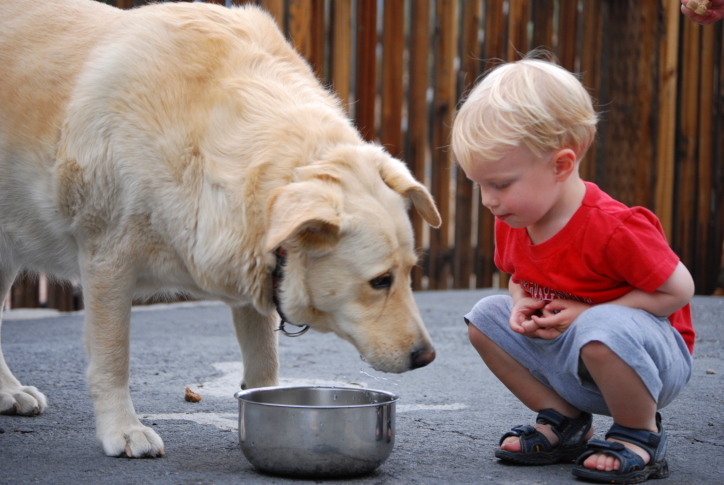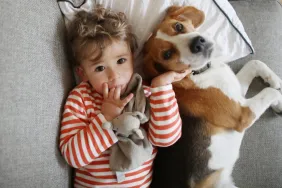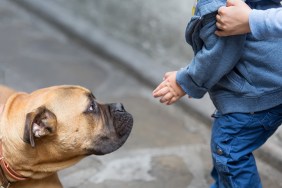Every few months, my kids ask if they can have a dog. My nine year old promises to take it for walks (and clean up after it), while my five year old swears he’ll make sure the pup always has enough to eat and drink. I always turn them down because our apartment is too small for a dog. Plus, I’m not ready to do most of the work.
Since we aren’t a dog family yet, my children gravitate toward puppy kisses and wagging tails from other people’s dogs. A trip to our local farmer’s market isn’t just about fresh produce. It’s an opportunity for my kids to meet furry friends on a stroll with their humans.
Most dogs we encounter are friendly. However, it’s important to teach kids how to safely approach dogs—especially when you don’t have a dog (like us). My dog-owner friends shared their top dog safety lessons:
- Ask the dog’s owner before petting his/her dog. This was the first thing I taught my kids. When my daughter was a toddler, her first instinct was to run up to every dog. Stop a few feet away and ask for permission. Asking ensures the safety of both your child and the dog. Some pups may not appreciate the attention or may even be scared by strangers. It might be tough to hear a “No,” but respect the dog’s boundaries.
- “Greet” the dog by letting it smell your hands recommends Kim of The Maker Mom and dog mom to Tesla. It’s the dog equivalent of a handshake. My kids place their hand palm up near a dog’s nose so it can get used to their scent before petting the dog. After they receive permission from the dog owner, of course.
- Pet the dog’s back or side, away from their head. Teach kids to pet the dog on its back, moving from neck to tail. Patting a dog’s head means “I’m the boss of you” in dog language. They don’t like it. Remind little ones to be gentle and to move slowly. Even better, demonstrate for your kids by petting the dog yourself.
- Never pet a service dog. I recently learned that you should never pet a service or guide dog. The dog is working to help his person and should not be distracted. These specially trained dogs wear a vest or harness to announce they are service animals. Instead of petting them, wave “Hello” to the dog from a distance.
- Relaxed dogs want to play while tense dogs do not. Since dogs can’t speak to us, learning their body language is important. The ASPCA shares that playful dogs will have normal facial expressions and have a relaxed stance. Scared dogs hunch to make themselves look smaller, while an angry dog makes himself look larger and more threatening.
- Ignore overly-friendly dogs. Some dogs love giving kisses and may even jump on you. My kids aren’t fans of dogs jumping on them. Dog owner Melody Schreiber recommends that you turn around and ignore the dog. This may sound counterintuitive, but her dog hates being ignored and will stop its bad behavior right away. Dogs just want our love.
- Never feed a dog chocolate. Our favorite human treat is toxic to our canine friends. Even one chocolate chip cookie can hurt a small dog. If your child has eaten any chocolate, make sure to wash hands (and faces) before petting a dog. It might be cute to see a dog lick your children’s hands clean, but it can be deadly when chocolate is involved. Raisins and grapes are also toxic for dogs.
- Growls mean keep away. Hearing a dog growl may sound scary and it should. Growls are an instinctual reaction when dogs need space, are afraid, or are in pain. If a dog growls while your child is petting it, step away and let the dog owner take care of the dog.
- Some barks and howls are friendly. Howling and barking are other ways dogs communicate. They may use it to “talk” to other dogs or just to announce their presence. It’s similar to how our kids just say, “Mommy, Mommy, Mommy,” to make sure we know they’re still there. Yes, we know you’re there. If you’re unsure what a dog’s bark or howl means, ask their owners.
Dogs are man’s best friend for a reason. They’re lovable, cuddly, and fun—as long as you’re respectful and understand a dog’s body language.
image: Getty/eb33








